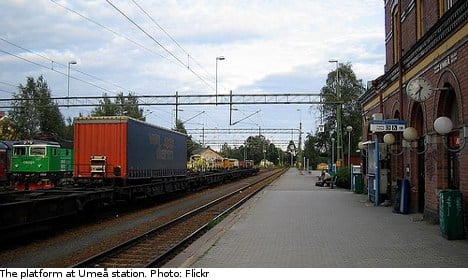A third suspect, a man aged about 20, has been detained by the police in the nothern city, according to Umeå police’s website on Tuesday night. Interrogations continue with two other suspects, detained on the night of the murder, with police saying little about any potential motive.
“We don’t want to give out any details about he preliminary investigation,” spokesman Peder Jonsson told the TT news agency.
The woman was shot on the platform at Umeå central station on Saturday morning. The fatal shooting was witnessed by youth team players from Umeå FC who were travelling to an away match in Luleå.
“We heard a shot and then we saw a woman who had been shot. It is the worst thing that I have ever experienced,” one of the players told the TT news agency.
Other witnesses to the slaying told reporters that they had seen the injured woman on the platform, calling for help. The woman was rushed to Norrland’s University Hospital in the city but her life could not be saved.
TT/The Local/at



 Please whitelist us to continue reading.
Please whitelist us to continue reading.
Member comments